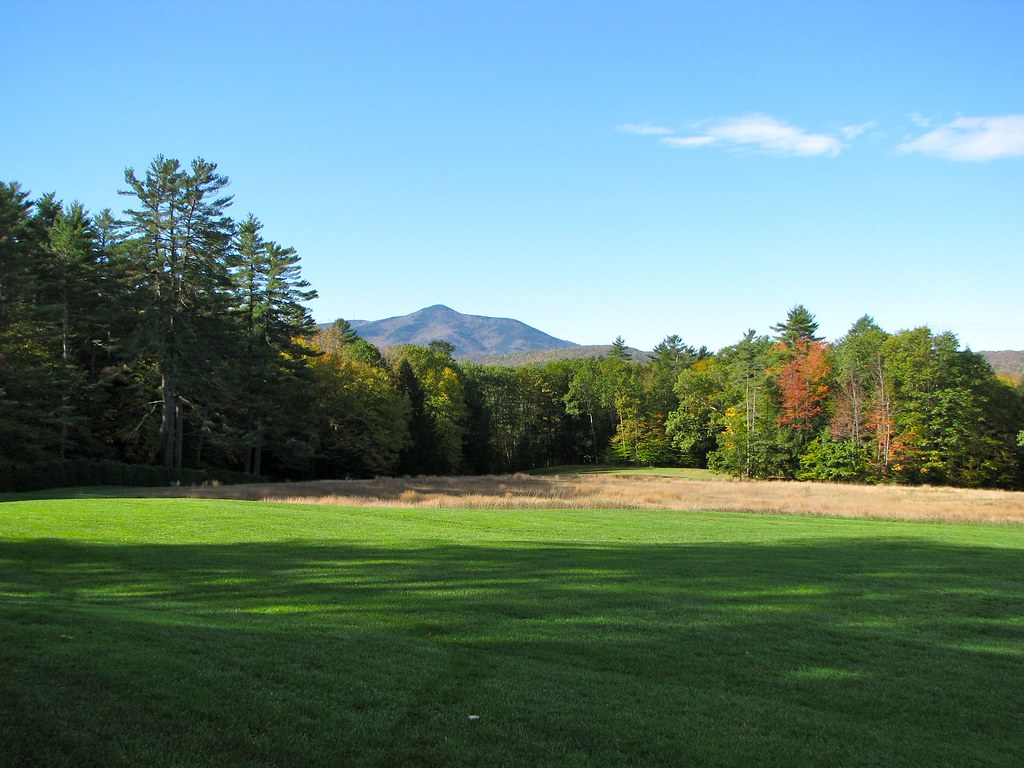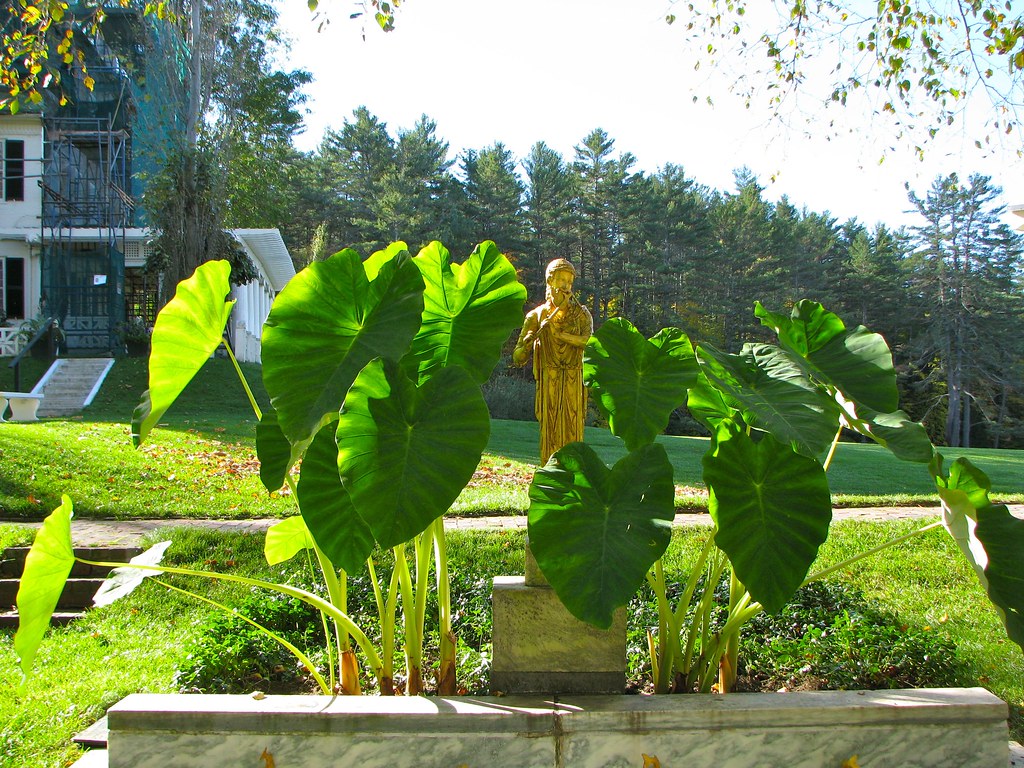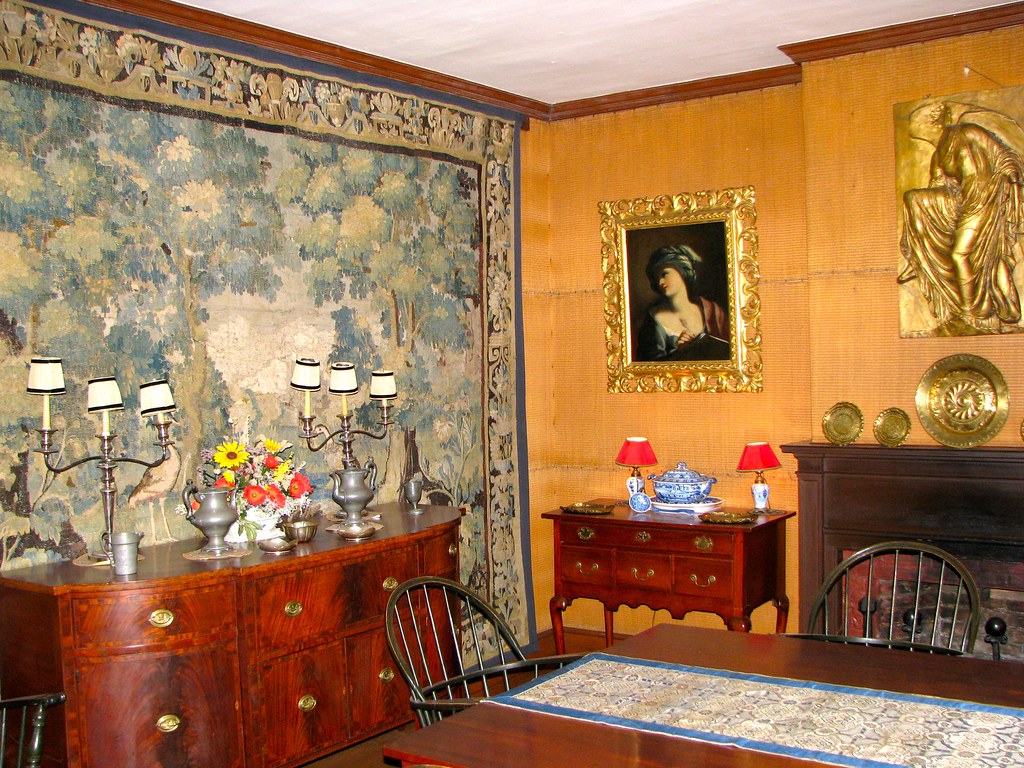Cornish, Sullivan Co., New Hampshire, USA (October 2010)

Augustus Saint-Gaudens hailed from Ireland but moved with his family to the United States as a small child. He studied in Europe and spent the formative years of his career in New York City. Eventually he became one of the most preeminent sculptors of the “American Renaissance” of the late Nineteenth and early Twentieth Century.
Saint-Gaudens moved to Cornish, New Hampshire in 1885, to an estate he called Aspet (map). He lived in the home, converted outbuildings into studios, and landscaped lovely gardens and greens. Mount Ascutney, on the other side of the Connecticut River in Vermont, served as a magnificent backdrop for the entire scene. The Saint-Gaudens National Historical Park lovingly preserves all of this.
Cornish Art Colony

Saint-Gaudens and his Aspet estate served as the nucleus of the Cornish Art Colony. Creative people from many different fields flocked to the Cornish area, part of a larger artistic movement of painters, sculptors, writers, architects and actors. Many came to the estate as part of a summer program, becoming ingrained within its social network. Eventually they began to settle in Cornish year-round as the movement grew. The whole scene circled around the personality of Saint-Gaudens and it began to dissipate after his death in 1907.
Galleries and Studios

Visitors can freely roam the grounds of the estate. Sculptures abound in various galleries, atria, gardens and studios. Many people know the work of Augustus Saint-Gaudens for his design of gold coins, including the iconic twenty dollar “double eagle” gold piece. Examples can be seen along with much larger plaster designs in the New Gallery.
I preferred the Little Studio which Saint-Gaudens reserved for his private use. Ceilings soar in this wonderfully designed building filled with natural light. Another gallery, the picture gallery, hosted rotating exhibitions. It featured battlefield sketches from the Civil War during our visit in October 2010. More than 100 works by Saint-Gaudens adorn the property along with some guest works.
The House

While the estate is known as Aspet, the name applies more appropriately to the house where Saint-Gaudens and his wife Augusta lived day-to-day. Unlike the grounds, the home does not open continuously nor completely. People can’t simply walk in and look around on their own.
We visited during a quiet time, a midweek day in October so we got a ticket for the next tour without any problems. The tour doesn’t cost anything but a ticketing process assures that the house doesn’t get overwhelmed by crowds. That would be a very real possibility as the home has limited space in the publicly accessible areas.
Nearly everything in Aspet remained exactly as it appeared when Saint-Gaudens lived there. Visitors gain an amazing perspective of how Saint-Gaudens lived his personal life both from the design and furnishings, and from the informative tour guide who presented the story of each room on the first floor.
The Saint-Gaudens National Historical Park may be one of the smaller and lesser-known properties in the National Park Service inventory, and it’s a bit out of the way. That, however, makes it particularly worthwhile: a wealth of beautiful art, a pristine bucolic setting, and a fascinating historical story combined to make this a enjoyable destination.

Leave a Reply